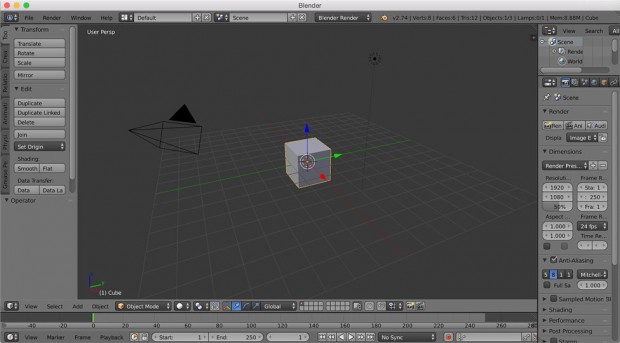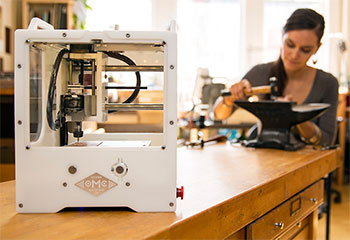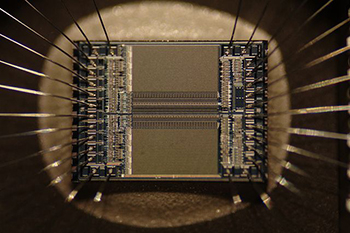- How to Hire (Henry Ward) — this isn’t holy writ for everyone, but the clear way in which he lays out how he thinks about hiring should be a model to all managers, even those who disagree with his specific recommendations.
- From the Ground Up: Reasoning About Distributed Systems in the Real World (Tyler Treat) — When we try to provide semantics like guaranteed, exactly-once, and ordered message delivery, we usually end up with something that’s over-engineered, difficult to deploy and operate, fragile, and slow. What is the upside to all of this? Something that makes your life easier as a developer when things go perfectly well, but the reality is things don’t go perfectly well most of the time. Instead, you end up getting paged at 1 a.m. trying to figure out why RabbitMQ told your monitoring everything is awesome while proceeding to take a dump in your front yard. An approachable argument for shifting some consistency checks to application layer so the infrastructure can be simpler.
- 3D Printed Ceramics to 1700°C (Ars Technica) — The key step used in the new work is to replace the standard polymers used to create ceramics with a chemical that polymerizes when exposed to UV light. (These can have a variety of chemistries; the authors list thiol, vinyl, acrylate, methacrylate, and epoxy groups.) This means they’re able to be polymerized using a fairly standard 3D printer setup. In fact, the paper lists the model number of the version the authors bought from a different company.
- Guesstimate — spreadsheet for things that aren’t certain.
"3d printing" entries


Four short links: 4 January 2016
How to Hire, Real World Distributed Systems, 3D-Printed Ceramics, and Approximate Spreadsheets

Marcelo Coelho and Colin Raney on 3D printing and the digital manufacturing revolution
The O’Reilly Solid Podcast: Lessons from the Pop-up Factory.
Subscribe to the O’Reilly Solid Podcast for insight and analysis about the Internet of Things and the worlds of hardware, software, and manufacturing.
In this episode of the Solid Podcast, David Cranor and I talk with Marcelo Coelho, creative director of Marcelo Coelho Studio, and Colin Raney, chief marketing officer at Formlabs.
Coelho and Raney worked with Cranor on the Pop-up Factory, a production line that manufactured connected devices on the floor of the Solid 2015 conference. The four of us reviewed the process of spinning up the factory (which took just two months from beginning to end), and the impact of live fabrication on attendees at the conference.
Discussion points:
- Manufacturing as a creative process, and as an input for designers
- How 3D printing reduces iteration time and enables design and production to occur simultaneously
- Manufacturing as deployment
- Why the Pop-up Factory is analogous to the Hollywood model of film production


Four short links: 11 November 2015
Fundable Hardware Trends, Experience Heuristics, Robot Design Software, and Ops Feedback in Dev Tools
- 2015 Hardware Trends — HAXLR8R deck of the trends they see in fundable hardware.
- Heuristics — the heuristics and intuition risks that beset backcountry skiers are instantly recognizable to dev managers.
- Interactive Design of 3D-Printable Robotic Creatures (Disney Research) — paper describing software to let you design (add/remove motor-controlled legs, change shape, customize gait, etc.), modelling how they’ll move, and then 3D print when you’re happy. (via IEEE Spectrum)
- Runtime Metric Meets Developer: Building Better Cloud Applications Using Feedback (Adrian Colyer) — surfacing operations data like calls/sec, time to complete, etc. in the developer’s IDE. Wow, that’s genius. (And Adrian’s explanation/excerpts make this easy to digest)

A developer’s introduction to 3D animation and Blender
An overview of the 3D animation process using Blender.

Creating 3D animations is like writing software. Both processes require
knowing certain industry terms. Some animation terms are:
- Modeling
- Texturing
- Rigging
- Setting up the scene with cameras, lights, and other effects
- Animating
- Rendering
Let’s define each of these, and then we’ll dig into some code with Blender’s API.
Modeling is the process of creating 3D models. One way is to represent the 3D model as points in 3D space. Each point, or vertex, has 3 coordinates: an X, an Y, and a Z coordinate, to define its location in 3D space. A pair of vertices can be connected by an edge, and edges bound polygons called faces. These faces define the surface of the model. Modeling is all about creating these sets of vertices, edges, and faces.

To create a model, we usually start with a primitive shape (like a sphere or a cube) and reshape it into what we’d like. Individual vertices, edges, and faces can be repositioned. New vertices, edges, and faces can be added to the basic model through simple operations. Two common ones are extrusion and subdivision.


Four short links: 27 August 2015
Chrome as APT, Nature's Mimicry, Information Extraction, and Better 3D Printing
- The Advanced Persistent Threat You Have: Google Chrome (PDF) — argues that if you can’t detect and classify Google Chrome’s self-updating behavior, you’re not in a position to know when you’re hit by malware that also downloads and executes code from the net that updates executables and system files.
- Things Mimicking Other Things — nifty visual catalog/graph of camouflage and imitation in nature.
- MITIE — permissively-licensed (Boost) tools for named entity extraction and binary relation detection as well as tools for training custom extractors and relation detectors.
- MultiFab Prints 10 Materials At Once — and uses computer vision to self-calibrate and self-correct, as well as letting users embed objects (e.g., circuit boards) in the print. developed by CSAIL researchers from low-cost, off-the-shelf components that cost a total of $7,000


Four short links: 26 August 2015
World SF, Digital Currency Scholarships, Project Management, and Glass 3D Printing
- The Apex Book of World SF 4 (Amazon) — if SF invents the future by shaping and directing our imagination, and if you believe that non-American cultures will ascend over time, then it behooves you to sample this collection of SF from beyond the usual. (via Cory Doctorow)
- Diversity Scholarships Available — to Digital Consensus 2015, a conference on digital currency. Apply or tell someone who is eligible.
- Making Huge Projects Work (Amy Hoy) — the description of her workflow for modest and monster projects was useful to me, and may be to you as well. I think the real question is “where do we get an Alex of our own?” [Note: swearing]
- Additive Manufacturing of Optically Transparent Glass (PDF) — yes, a 3D printer that emits glass. Check out the videos on IFL Science.


Four short links: 15 July 2015
OpeNSAurce, Multimaterial Printing, Functional Javascript, and Outlier Detection
- System Integrity Management Platform (Github) — NSA releases security compliance tool for government departments.
- 3D-Printed Explosive Jumping Robot Combines Firm and Squishy Parts (IEEE Spectrum) — Different parts of the robot grade over three orders of magnitude from stiff like plastic to squishy like rubber, through the use of nine different layers of 3D printed materials.
- Professor Frisby’s Mostly Adequate Guide to Functional Programming — a book on functional programming, using Javascript as the programming language.
- Tracking Down Villains — the software and algorithms that Netflix uses to detect outliers in their infrastructure monitoring.

Creative computing with Clojure
Exploring Clojure as a tool to generate music, visual art, poetry, and dance.

Clojure is gaining traction and popularity as a programming language. Both enterprises and startups are adopting this functional language because of the simplicity, elegance, and power that it brings to their business. The language originated on the JVM, but has since spread to run on the CLR and Node.js, including web browsers and mobile devices. With this spread of practical innovation, there has been another delightful development: a groundswell of people making art with Clojure.
Getting creative with Clojure
Creative Computing combines the power and engineering of the computer with the artistic inspirations of humans. People are using Clojure as a tool to generate music, visual art, poetry, and even dance. This ability to harness technology for creative purposes is both exciting and important. For it not only touches the heart and inspires existing technologists, but it also transcends all barriers. Art is a gateway to bring new people, young and old, from all walks of life, to the field of programming.
Let’s explore some of the areas of Creative Computing with Clojure, and showcase some inspiring examples from a selection of artist/programmers. We’ll look at projects that touch on music, art, games, writing, and even robots.


Four short links: 16 April 2015
Relationships and Inference, Mother of All Demos, Kafka at Scale, and Real World Hardware
- DeepDive — DeepDive is targeted to help users extract relations between entities from data and make inferences about facts involving the entities. DeepDive can process structured, unstructured, clean, or noisy data and outputs the results into a database.
- From the Vault: Watching (and re-watching) “The Mother of All Demos” — “I wish there was more about the social vision for computing—I worked with him for a long time, and Doug was always thinking ‘how can we collectively collaborate,’ like a sort of rock band.”
- Running Kafka at Scale (LinkedIn Engineering) — This tiered infrastructure solves many problems, but it greatly complicates monitoring Kafka and assuring its health. While a single Kafka cluster, when running normally, will not lose messages, the introduction of additional tiers, along with additional components such as mirror makers, creates myriad points of failure where messages can disappear. In addition to monitoring the Kafka clusters and their health, we needed to create a means to assure that all messages produced are present in each of the tiers, and make it to the critical consumers of that data.
- 3D Printing Titanium, and the Bin of Broken Dreams — you will learn HUGE amounts on the challenges of real-world manufacturing by reading this.

Talking shop with Other Machine Company
The O'Reilly Solid Podcast: Danielle Applestone on running a machine tool startup and empowerment through desktop manufacturing.
Register for Solid 2015, where you can see Danielle Applestone’s session — How to make an Othermill: From milk jugs to your door — and much more.

An Othermill. Photo: Other Machine Co.
Grown out of the Machines that Make project at MIT’s Center for Bits and Atoms and incubated at Saul Griffith’s Otherlab in San Francisco, Other Machine Company launched a successful Kickstarter to finance completion of the Othermill back in May of 2013.
For readers not familiar with this particular type of kit, I’ll go into a bit more detail: a CNC (Computer Numerical Control) mill is a machine tool that can be controlled by a computer to move some kind of rotary cutter (such as an endmill or drill bit) to remove material from a workpiece. This is a type of “subtractive manufacturing” process.
With all of the fuss around 3D printing (known in the industry as “additive manufacturing”) these days, I personally don’t think that CNC machining gets enough attention. Although 3D printing is certainly an exciting technology in its own right, it cannot currently compete with CNC machining in terms of cost, supported material types, and range of applications. Read more…
